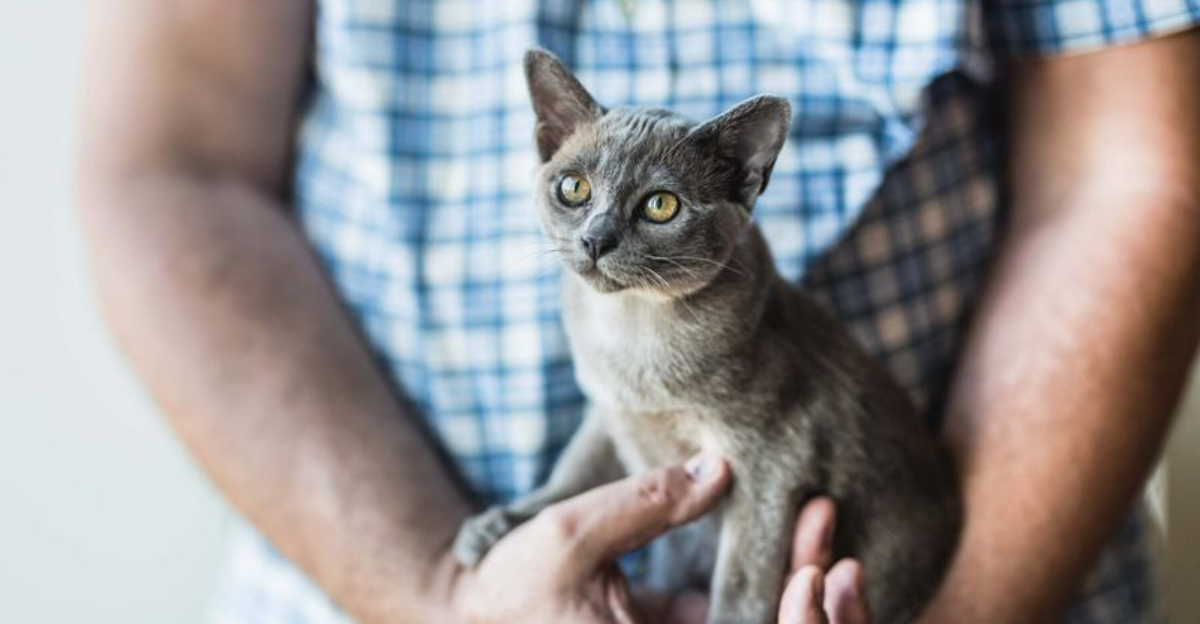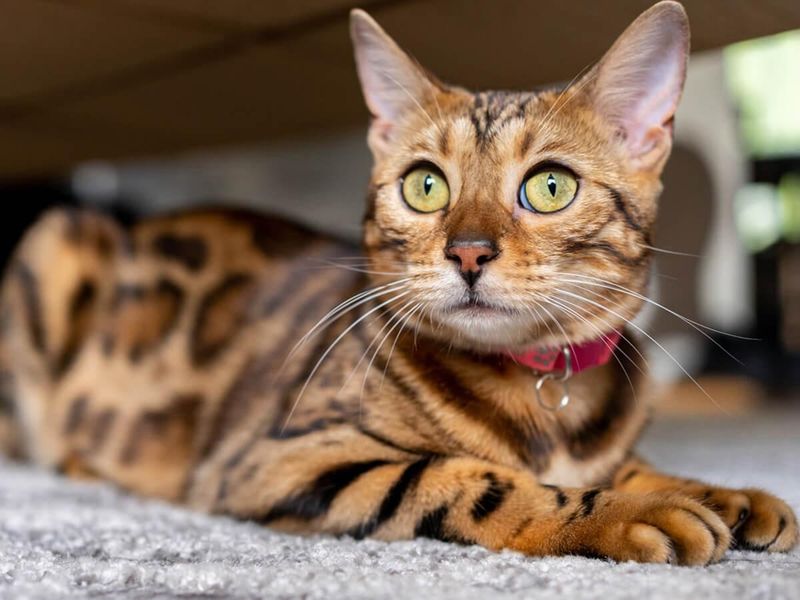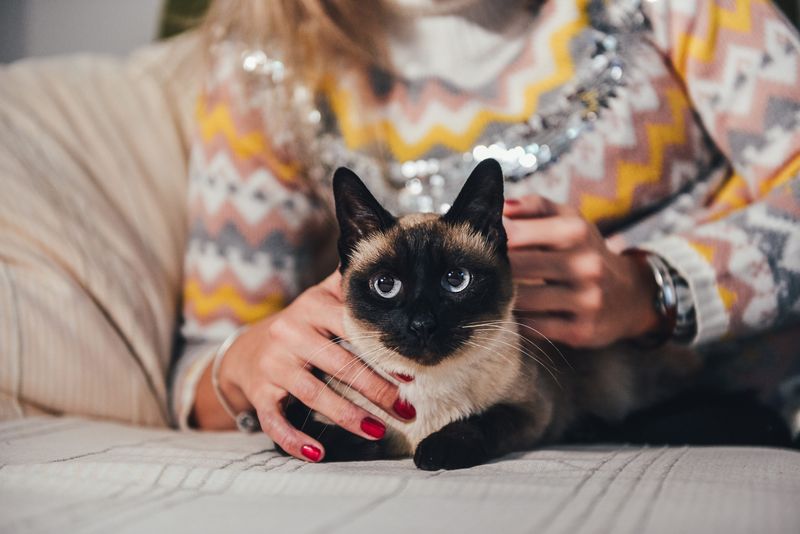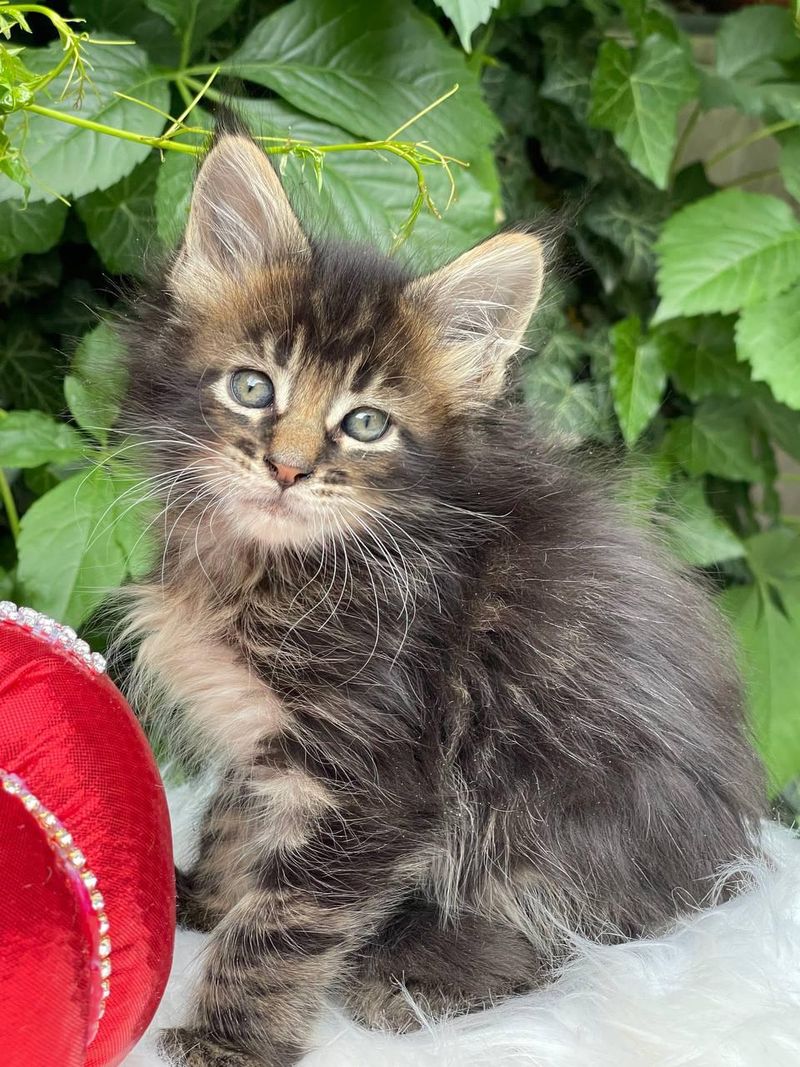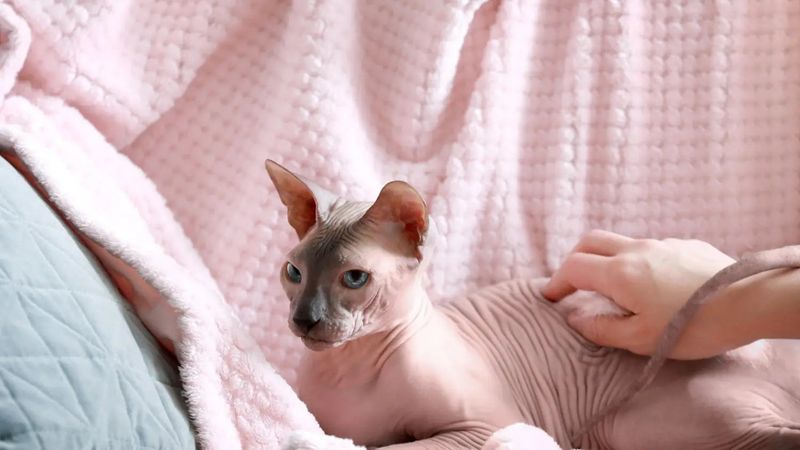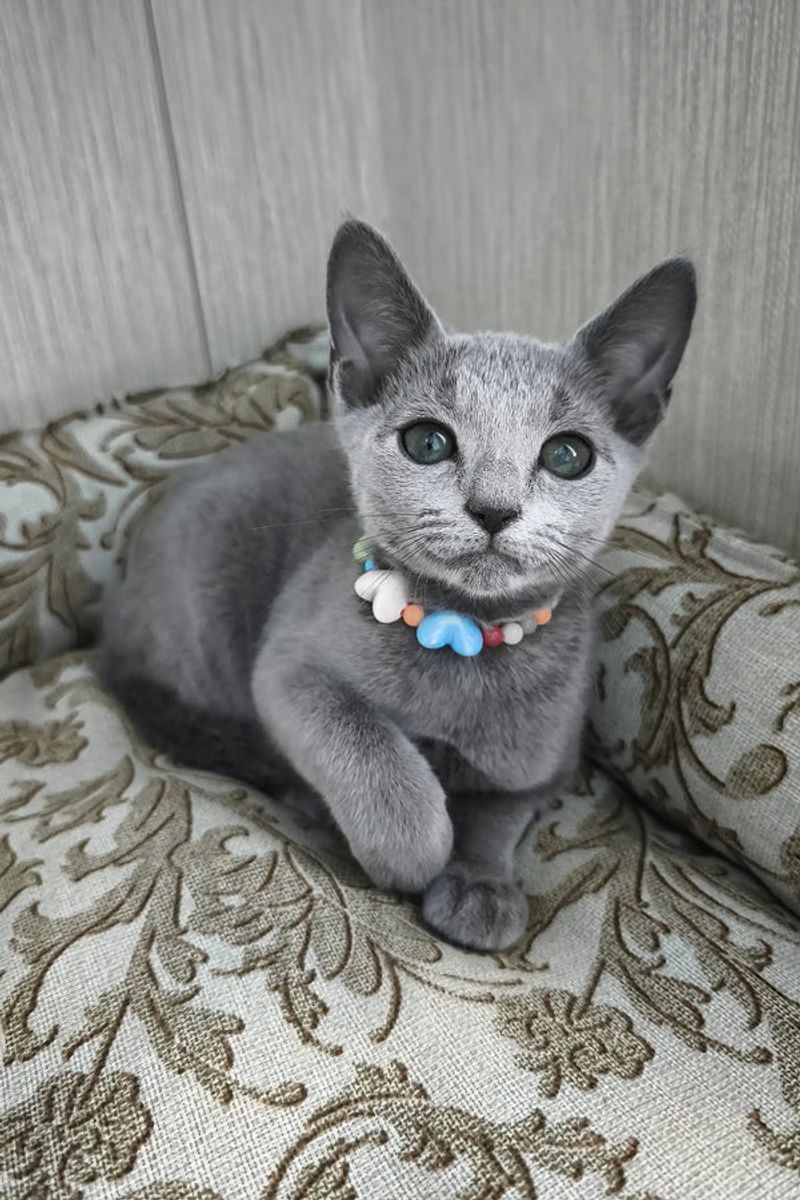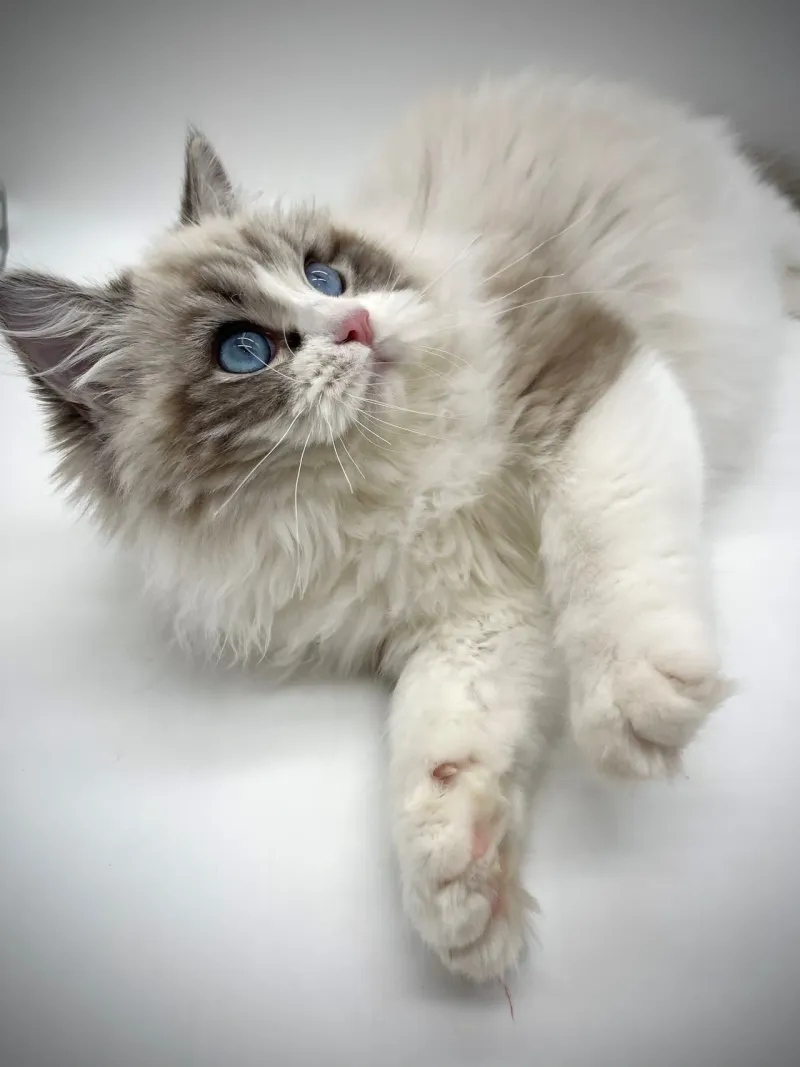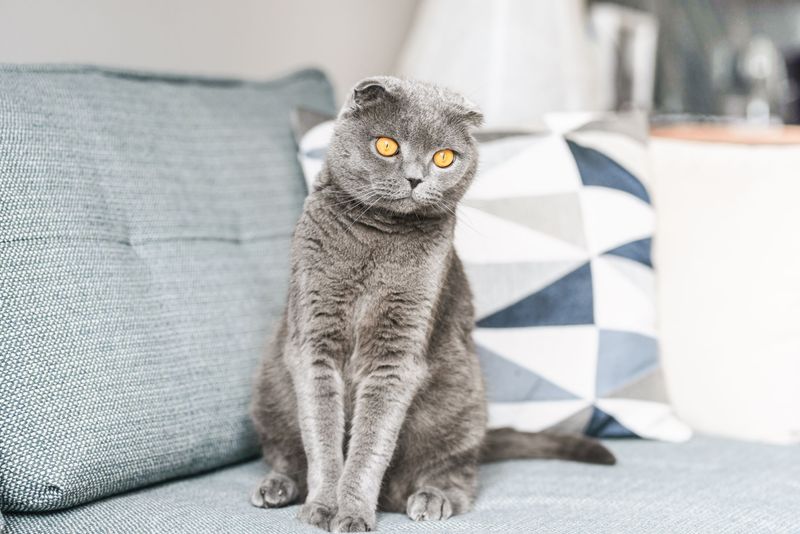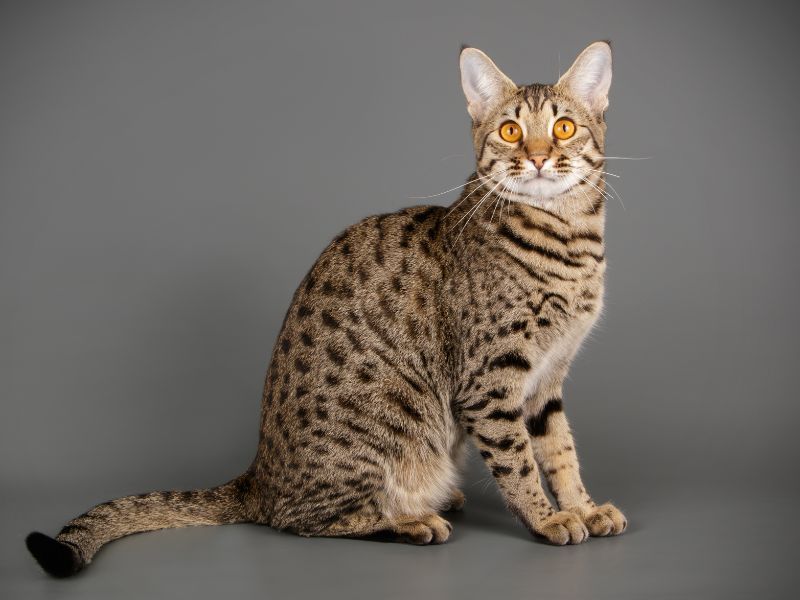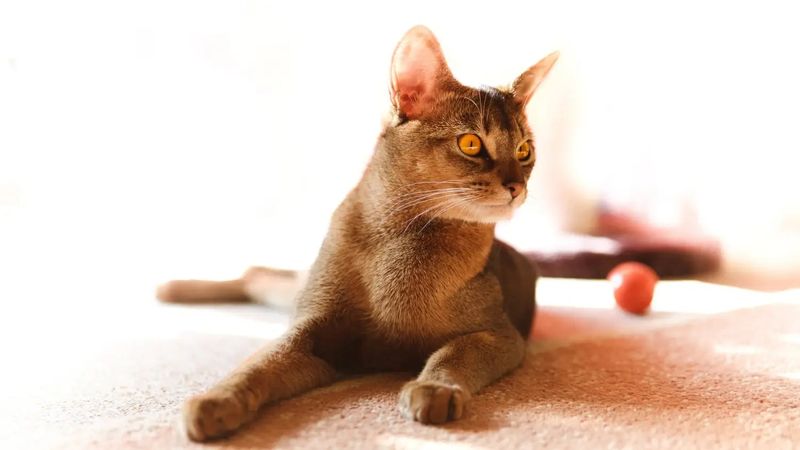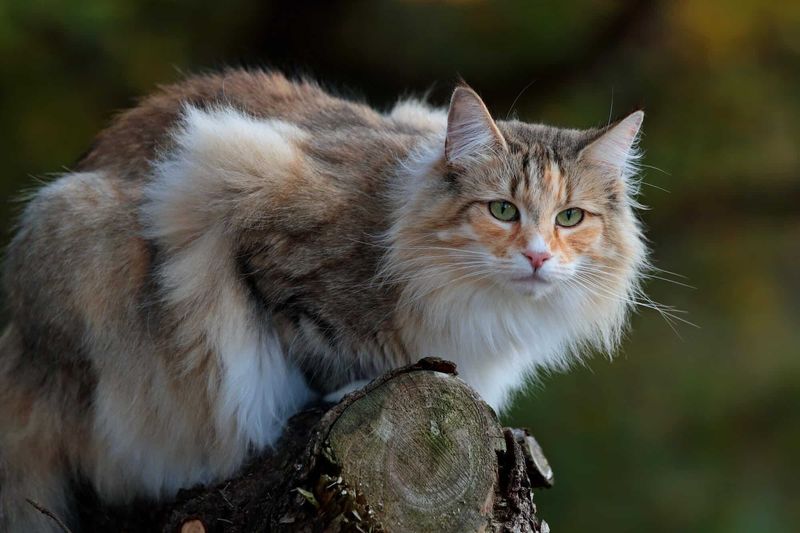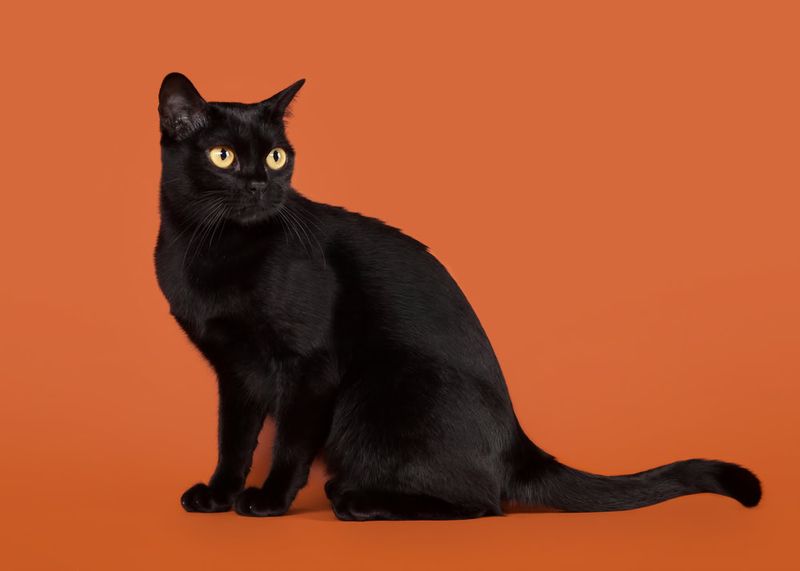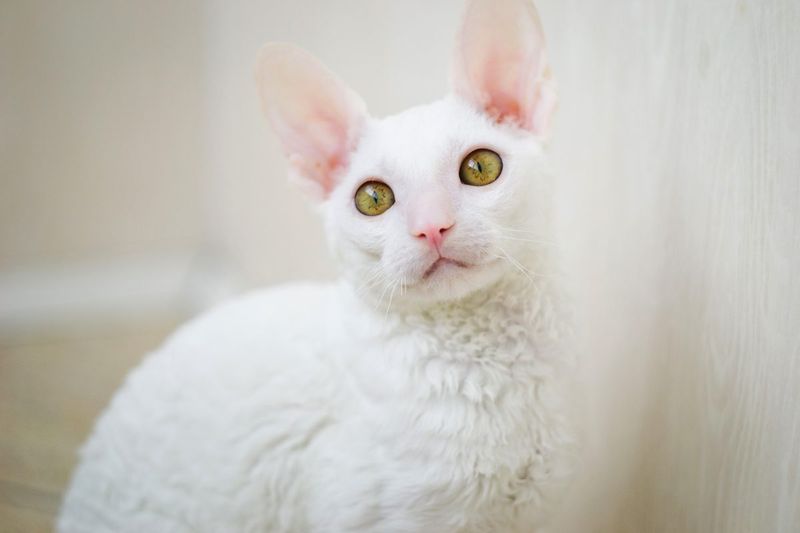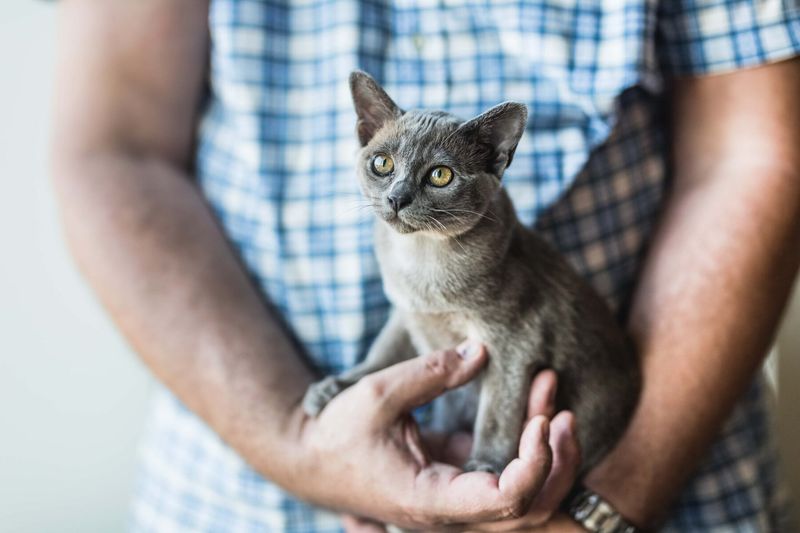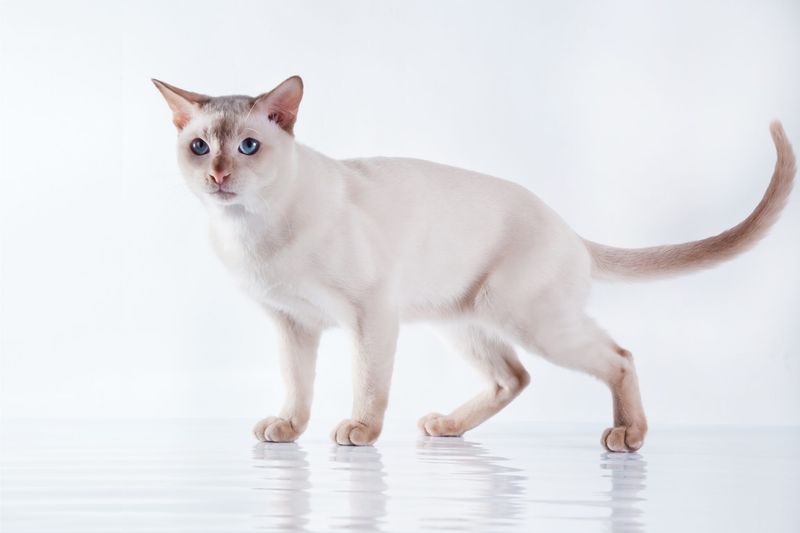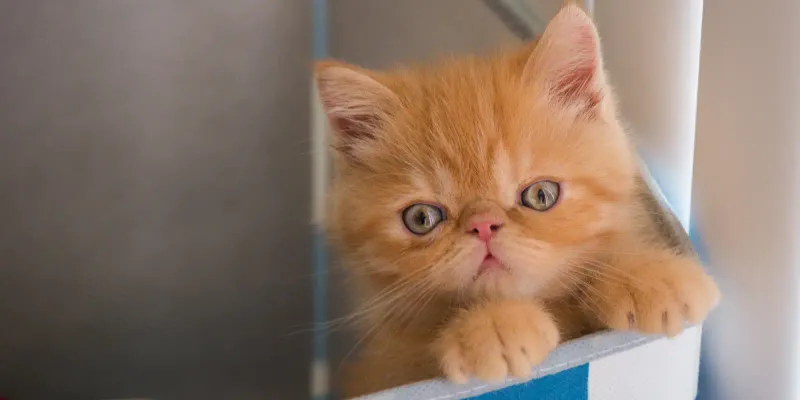📖 Table of Content:
Cats often get labeled as aggressive when they’re simply misunderstood. Many breeds have earned unfair reputations based on their appearance or independent nature. The truth is, most so-called ‘aggressive’ cats are just communicating in ways humans don’t always understand. Let’s set the record straight about these 17 cat breeds that deserve a second chance.
1. Bengal
With their striking, exotic coats, Bengals are often mistaken for wild or aggressive cats. In reality, they’re intelligent and energetic companions who simply need plenty of enrichment to stay happy and well-behaved.
Bengals form strong bonds with their families and often follow their humans around like shadows. Their playful nature makes them excellent companions for active households. They’re actually quite affectionate once they’ve burned off their excess energy through interactive play or climbing their cat trees.
2. Siamese
Vocal and opinionated, Siamese cats are often misinterpreted as demanding or aggressive when they’re simply communicating. Their loud meows and persistent nature come from intelligence and a desire to interact with their people. Siamese cats thrive on attention and can become deeply attached to their humans.
They’ll follow you everywhere, ‘helping’ with whatever you’re doing and providing running commentary. Far from being aggressive, they’re actually seeking connection and engagement. These social butterflies just want to be included in family activities and will reward your attention with unwavering loyalty.
3. Maine Coon
Don’t let their imposing size fool you – Maine Coons are the gentle giants of the cat world. Despite weighing up to 25 pounds, these magnificent felines are known for their sweet temperaments and patient attitudes. Maine Coons earned the nickname ‘gentle giants’ because they rarely use their size to intimidate.
Their soft chirps and trills contrast charmingly with their robust appearance. These cats excel in family settings and typically get along well with children and other pets. Their laid-back nature makes them adaptable to various living situations, proving that sometimes the biggest cats have the biggest hearts.
4. Sphynx
The hairless Sphynx often faces prejudice due to its unusual appearance, with some people finding their lack of fur unsettling. This superficial judgment couldn’t be further from the truth about their personalities. Sphynx cats rank among the most affectionate and people-oriented breeds around. They seek warmth not just for temperature regulation but because they genuinely enjoy cuddling with their humans.
These social butterflies typically greet visitors with curiosity rather than fear or aggression. A Sphynx will likely be the first to investigate new friends and may even try to climb onto the shoulders of guests for a closer hello.
5. Russian Blue
Often perceived as distant, Russian Blues are simply shy around strangers. This reserved behavior is more about caution than disinterest. With time and trust, they reveal a deeply loyal and affectionate side.
They form deep bonds with their chosen humans and show remarkable sensitivity to their owners’ emotions. These intelligent cats prefer peaceful environments and rarely act out destructively. Their quiet demeanor and tendency to observe before engaging makes them perfect for calm households where their thoughtful nature is appreciated.
6. Ragdoll
Named for their tendency to go limp when held, Ragdolls are known for their calm and gentle temperament. These blue-eyed cats are highly social and often display dog-like behavior, such as meeting their owners at the door and seeking out companionship.
They’re remarkably patient, making them excellent companions for households with children or other pets. Their calm demeanor extends to handling – many Ragdolls tolerate being dressed up or carried around without complaint. This breed consistently ranks among the most laid-back cats, preferring peaceful coexistence to confrontation.
7. Persian
With their flowing coats and tranquil personalities, Persians radiate quiet elegance. While they might not seek out roughhousing, they enjoy calm companionship and form strong bonds with those who respect their gentle nature.
They appreciate quiet environments where they can lounge regally on soft surfaces, observing household activities with dignified interest. Persians form strong attachments to their families but express affection subtly – through slow blinks, quiet purrs, and seeking nearby resting spots. Their peaceful temperament makes them ideal companions for seniors or anyone seeking a tranquil, low-energy feline friend.
8. Scottish Fold
Scottish Folds charm everyone with their distinctive folded ears and owl-like appearance. Behind those unique features lies a remarkably good-natured cat that adapts easily to various living situations. These medium-sized felines maintain a kitten-like playfulness well into adulthood.
They’re known for forming strong bonds with their humans without becoming overly dependent or clingy. Scottish Folds typically get along well with children, visitors, and other pets. They rarely show aggression and instead prefer to solve problems by walking away from conflict. Their adaptable nature makes them excellent companions for first-time cat owners or multi-pet households.
9. Savannah
People often assume Savannah cats are aggressive because of their serval heritage and bold appearance. In reality, they’re highly energetic and smart—not mean. They need outlets like climbing, puzzle toys, and interactive play to stay well-behaved.
Savannahs form intense bonds with their owners and often show dog-like loyalty, following their humans everywhere and even learning to walk on leashes. These cats thrive with consistent interaction and mental stimulation. When properly engaged, Savannahs channel their energy into play and learning tricks rather than destructive or aggressive behaviors, making them fascinating companions for active households.
10. Abyssinian
Don’t be fooled by their high energy—Abyssinians aren’t aggressive or overly excitable. These ticked-coated cats are just naturally curious and remarkably clever.
Unlike truly aggressive cats, Abyssinians rarely hiss or swat. Their busy nature comes from a desire to investigate every corner of their environment and participate in household activities. These social felines form strong bonds with their families but express affection through playful interaction rather than cuddling. An Abyssinian wants to be your active companion, not your lap cat. Their enthusiasm for life makes them delightful, engaging pets for households that appreciate their spirited nature.
11. Norwegian Forest Cat
To survive the severe winters of Scandinavia, Norwegian Forest Cats developed sturdy builds and thick coats. Despite their rugged looks, they have gentle personalities. Their independence sometimes leads people to think they’re aloof, but in reality, they are deeply devoted to their families.
These natural climbers appreciate homes with vertical spaces but don’t use their strength aggressively. Norwegian Forest Cats typically show patience with children and other pets. They balance self-sufficiency with genuine affection, often following family members around without being demanding. Their calm confidence makes them wonderful companions who rarely display territorial aggression.
12. Bombay
Due to myths about black cats and their piercing copper gaze, Bombay cats frequently face unfair judgment. Despite their panther-esque appearance, these cats are incredibly affectionate and thrive on human companionship.
These ‘velcro cats’ want nothing more than to be wherever their humans are, often curling up on laps or under blankets for warmth and closeness. Bombays typically adapt well to various living situations, including apartments and homes with other pets. Their playful nature and social intelligence make them wonderful companions who use their voices for conversation, not confrontation.
13. Cornish Rex
With their wavy coats and large ears, Cornish Rex cats have a unique appearance that some describe as alien-like. Their spirited behavior and playful antics can be misunderstood as troublesome rather than simply playful.
These active cats maintain kitten-like behavior throughout their lives. Their love of interactive play comes from intelligence and curiosity, not aggression or destructiveness. Cornish Rex cats form strong bonds with their families and often function as ‘heat-seeking missiles,’ finding the warmest spot – usually on their human’s lap. Their sociable nature extends to strangers and other pets, making them wonderful additions to most households.
14. Burmese
Burmese cats have satin-smooth coats and muscular bodies that belie their incredibly sweet temperaments. These medium-sized felines pack a lot of personality into compact frames. Famous for their people-oriented nature, Burmese cats typically greet everyone – even strangers – with friendly curiosity.
They’re known for developing strong attachments to their humans and wanting to participate in all household activities. Burmese rarely show aggressive tendencies and instead use their intelligence for play and interaction. They make excellent family cats who adapt well to homes with children or other pets. Their reputation for being ‘brick wrapped in silk’ refers to their solid feel when held, not any hardness of character.
15. Tonkinese
Blending Siamese and Burmese qualities, Tonkinese cats are medium-sized bundles of affection. Their frequent vocalizing can seem like they’re being demanding, but really, they’re just chatting with their loved ones. They thrive on socializing and playful activities.
A Tonkinese wants to be in the middle of household activities – helping with cooking, joining video calls, or supervising home repairs with curious interest. Unlike truly aggressive breeds, Tonkinese rarely use their claws or teeth inappropriately. Their energy channels into athletic play and learning tricks. They form strong bonds with their families and typically welcome visitors with enthusiastic greetings rather than hiding or showing territorial behavior.
16. Exotic Shorthair
Known for combining Persian features with short, manageable fur, Exotic Shorthairs are a popular choice for those who want a low-maintenance, cuddly cat.
They express affection through gentle headbutts and quiet purrs rather than demanding attention. Exotics adapt well to apartment living and various household situations. Their peaceful nature makes them excellent companions for seniors or busy professionals. Despite their laid-back attitude, they enjoy interactive play sessions that strengthen bonds with their humans.
17. Birman
Birmans stand out with their striking blue eyes and white-gloved paws, but their beauty is matched by their gentle souls. These medium-sized cats carry themselves with quiet dignity rather than aggressive posturing. Known as the ‘Sacred Cats of Burma,’ they have a long history as temple companions.
This heritage shows in their patient, contemplative nature and their tendency to form deep bonds with their chosen humans. Birmans typically welcome guests with curious interest rather than fear or aggression. They adapt well to homes with children or other pets, preferring harmony to conflict. Their soft voices match their gentle approach to life, making them wonderful family companions.
